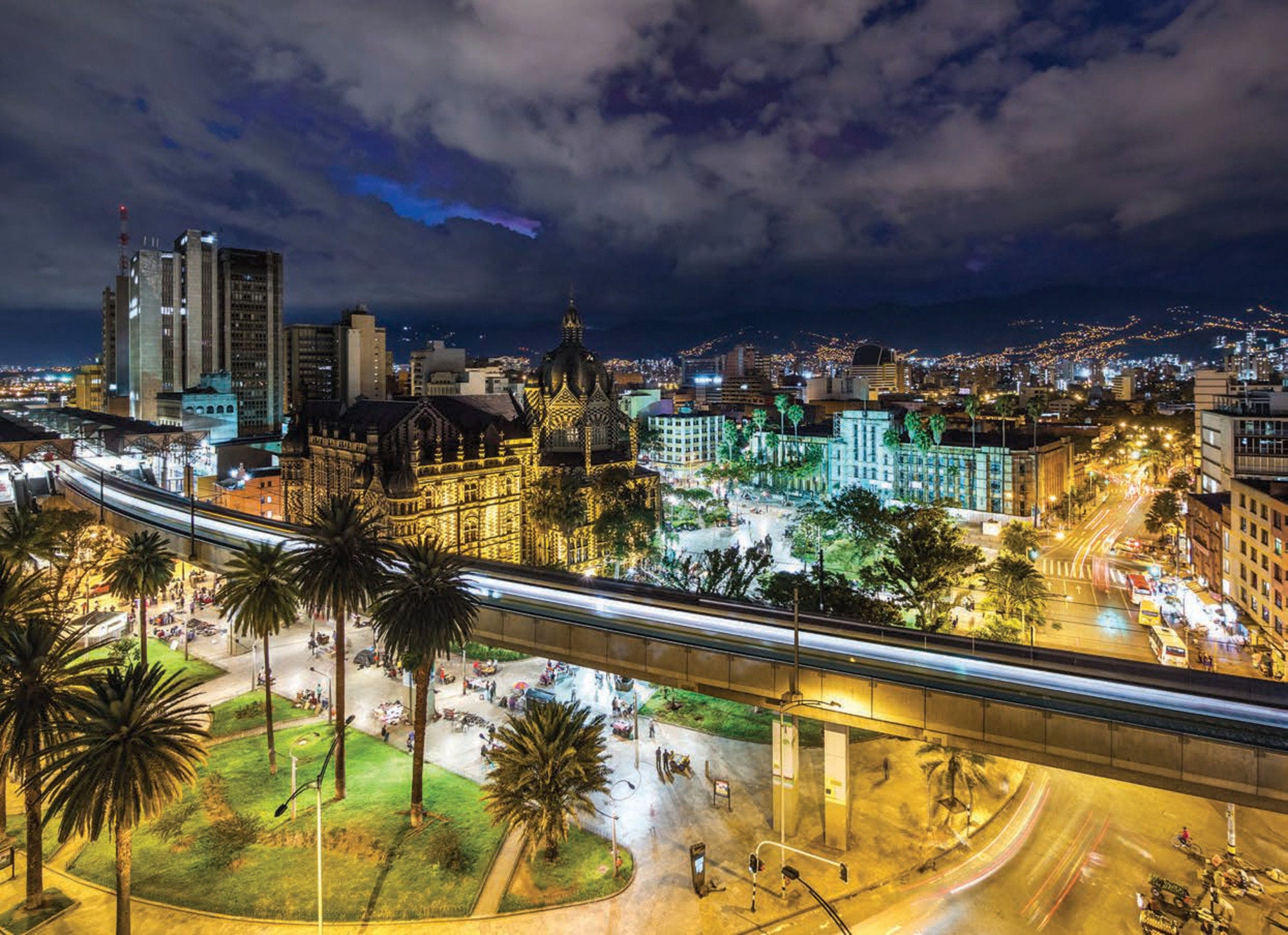Colombia is a highly urbanised country. According to the international definition of the degree of urbanisation endorsed at the 2020 Statistical Commission of the United Nations, 64% of the Colombian population lived in cities in 2015, while 25% lived in towns and semi-dense areas and 11% in rural areas (compared with 45%, 32% and 23% respectively in upper middle-income countries). Colombia has urbanised quickly over the past 70 years, as the share of the population living in urban areas according to the latest national census rose from 38.3% in 1950 to 75.5% in 2018. The number of urban inhabitants (living in the core cities of FUAs) rose by 1.3% per year on average between 2005 and 2018 (from 30.9 million to 36.4 million people). The National Administrative Department of Statistics (DANE) expects the share of population living in urban areas to reach 76% by 2050.
Colombia’s rapid urbanisation has mainly resulted from massive flows of rural migrants moving to urban areas in search of better living conditions since the late 1930s. In addition, 50 years of armed conflict and violence have pushed millions of people to flee areas of conflict, most often located in rural areas. As of January 2022, Colombia registered 8.2 million victims of forced displacement. More recently, Colombia has also been the main destination of the Venezuelan exodus. As of December 2020, more than 2.6 million migrants and refugees from Venezuela had settled in Colombian cities.
Colombia has developed a relatively polycentric urban system, with several major cities. Almost 40% of the urban population (13.2 million people) live in the municipal cores of 5 municipalities (Bogotá, D.C.: 7.4 million; Medellín: 2.4 million; Cali: 2.2 million; Barranquilla: 1.2 million; and Cartagena: 1.0 million). Less than 15% of Colombia’s urban population live in the 942 municipalities that count fewer than 20 000 inhabitants in their urban cores.
Around 66% of Colombia’s total population and 80% of the urban population lives in FUAs. According to the European Commission/OECD definition, Colombia has 53 FUAs composed of 106 municipalities, distributed mainly in the north, west and centre of the country. Out of these 53 FUAs, 45 have no commuting zone (i.e. 84% of total FUAs) – a high share compared to other OECD countries (27% on average). Consequently, the share of the Colombian FUA population living in commuting zones is only 2.6%, much less than the OECD average of 23.9%.
Colombia has urbanised through both densification and urban expansion. The urban core areas (cabeceras municipales) of Bogotá, Bucaramanga and Medellín rank among the world’s most densely populated cities (with 17 787, 10 409 and 20 363 inhabitants per km² respectively in 2018). Even when considering the whole metropolitan area, Colombian metropolitan areas, including Barranquilla, Bogotá and Medellín, are amongst the most densely populated among OECD countries (883 inhabitants per km2 on average, higher than the OECD average of 644 inhabitants per km2). Colombian cities have grown faster physically than demographically, indicating a phenomenon of urban sprawl. Between 1990 and 2015, the urban footprint in Colombian cities grew on average by 2.50% while the population increased by 2.28%.
Fast urbanisation in Colombia has been accompanied by the emergence of informal settlements. These are located mainly outside of municipal core areas but many are also located within them. Across Colombia, there are 1 517 reported informal settlements and more than 60% of them are concentrated in 6 cities (Bogotá, D.C., Bucaramanga, Cali, Medellín, Neiva, Villavicencio). Informal settlements represent around a quarter of the built-up area of Colombian cities and are home to almost 5 million people.
